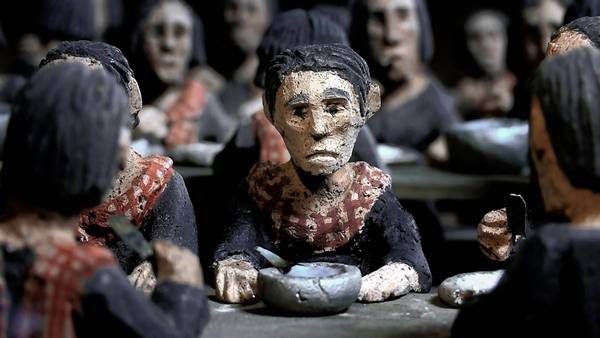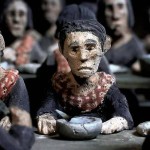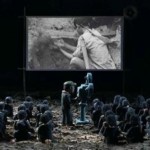Philosopher Albert Camus said, “Good intentions may do as much harm as malevolence if they lack understanding.” Indeed, we have seen many examples in history of how ideology, no matter how well intentioned, can lead to disastrous consequences if not tempered with compassion and respect for the rights of the individual. We saw it in Nazi Germany and in the Soviet Union during the Stalin era. There is no more blatant example of the distorted use of ideology than in the 1975 takeover of Cambodia (renamed as the Democratic Republic of Kampuchea) by the Khmer Rouge under the leadership of Pol Pot (a.k.a. Saloth Sar).
While the goal of the Khmer Rouge was to promote an agrarian socialist economy and eradicate any remaining traces of individuality, their process of forced labor and communal living led to the death of millions of people and when they fled in 1979, they left behind a trail of tears. Only thirteen-years-old at the time, Director Rithy Panh, lost his entire family in Cambodia during those years and has documented his experience in The Missing Picture, winner of the Un Certain Regard award at the 2013 Cannes Film Festival. It is a deeply moving film that uses hand-carved clay figures sculpted by Sarith Mang together with archival news footage and propaganda films used by the Khmer Rouge to paint an overwhelming picture of man’s inhumanity to man.
Although the sadness etched on the faces of the painted clay figures moving on doll-house sets are somewhat distancing and can only give us a vague idea of the amount of suffering that took place, Panh’s affectingly poetic voiceover helps us to bridge that gap by offering the perspective of one who lived through those years. In their four years in control of Cambodia, the Khmer Rouge destroyed food sources outside of centralized control, forbade fishing and the planting of mountain rice, abolished medicine and hospitals, and refused offers of humanitarian aid. Now 50, Panh says that making the film has helped him to come to terms with his memories, reflecting that, “in the middle of life, childhood returns—sweet and bitter.”
While the film’s historical perspective is limited, it gives us a sense of the vibrant life of Phnom Penh before the Khmer Rouge arrived to evacuate the city, uprooting and exiling millions of families to re-educate them in labor camps. Those not needed were told, “To keep you is no benefit, to destroy you is no loss.” Those forced to leave were told that the evacuation was meant to protect them from American bombs and they would be able to return to their homes in a few days. Panh refers to the U.S. bombing of Cambodia during the Vietnam War as a factor that persuaded Cambodians to look for an alternative to their current political system but he does not attempt in any way to justify the actions of Pol Pot.
The Missing Picture, while grim and perhaps repetitive, is a powerful prayer that no child ever has to again witness what Panh saw: His family forced from a home filled with music and literature, his father going on a hunger strike and dying from starvation and illness; the execution of children who were forced to denounce their parents; sitting on the cold ground night after night watching propaganda films displaying happy faces while outside thousands starved. Under the leadership of Pol Pot, an estimated 2.2 million people died from execution, illness, or starvation, a tragedy that left a legacy of suffering that continues until the present day. Miraculously, Panh survived to tell his story and in The Missing Picture, has left us a testament of unbounded courage.






'Movie Review: The Missing Picture (2013)' has 1 comment
November 8, 2013 @ 11:55 pm Hicks Green
Using clay figures is an interesting way to depict the events. Is it really an appropriate way to capture the atrocities though? Seems like it would lack the emotional punch…